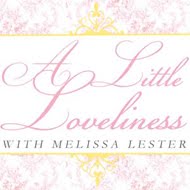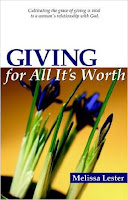
Apple butter seemed like the perfect take-home favor for this quarter's book club meeting, where we talked about Christian fiction novel Sweetwater Gap by Denise Hunter. This was my first attempt at making apple butter, so I turned to my grandmother for advice on how to make it. I used her tried and true recipe, but tweaked it to make it my own. I hope you will give it a try!
Apple Butter
As it cooks, this recipe will fill your house with the warm aroma of fall.
ApplesYou can use a variety of apples for this recipe. A farmer's market will probably yield the best selection of cooking apples, but if you need to purchase them from your grocer, select one or more varieties that bake well. For my apple butter, I used a mixture of Jonamac, Gala and Granny Smith apples.
Apple cider
Sugar
Cinnamon
Allspice
Vanilla
Apple Cider Vinegar
Slice and core the apples, and place them in a heavy pot. Add a little water or apple cider to the pot (not enough to cover the apples; just enough to add a little liquid). Place the lid on the pot, and heat the apples to boiling. Turn down the heat, and simmer the apples until they are soft.
Pour the cooked apples into a strainer, and let the liquid drain out. Then push the apple pulp back into the pot through the strainer, careful to remove any seeds or bits of peel that might go through. When you have gotten as much pulp as possible through the strainer, measure out the pulp to see how many cups you have.
Place the pulp back in the pot, and add seasonings. For 6 cups of pulp, add 3 cups sugar, 2 teaspoons cinnamon, 1/4 teaspoon allspice, 1 teaspoon vanilla and 1/8 cup apple cider vinegar. Use an emulsion blender to incorporate the spices and smooth the pulp. Then cook on medium-low heat until thick. The apple butter needs to cook without the lid so moisture will evaporate, but as the liquid thickens it has a tendency to splatter. To avoid heavy cleanup duty, lay two wooden spoons across the pot and prop the lid on top.
Apple butter will not thicken in the jar, so you need to cook it down to the consistency you desire. There are a couple of tests you can use to determine if it is thick enough. Place a spoonful on a plate, and if liquid seeps out from the edges the butter is too thin. You can also stir the apple butter in the pan and spoon a dollop on top of the rest of the mixture, and if it stays on top, you have achieved a desirable consistency. From this point, thickness is really a matter of taste.
When you reach the desired consistency, sample the butter. Season, if needed, and run the emulsion blender through the apple butter once more. Remove the apple butter from heat, and allow it to cool before spooning it into sterile jars. Serve warm from the stove, or store in the refrigerator.





















